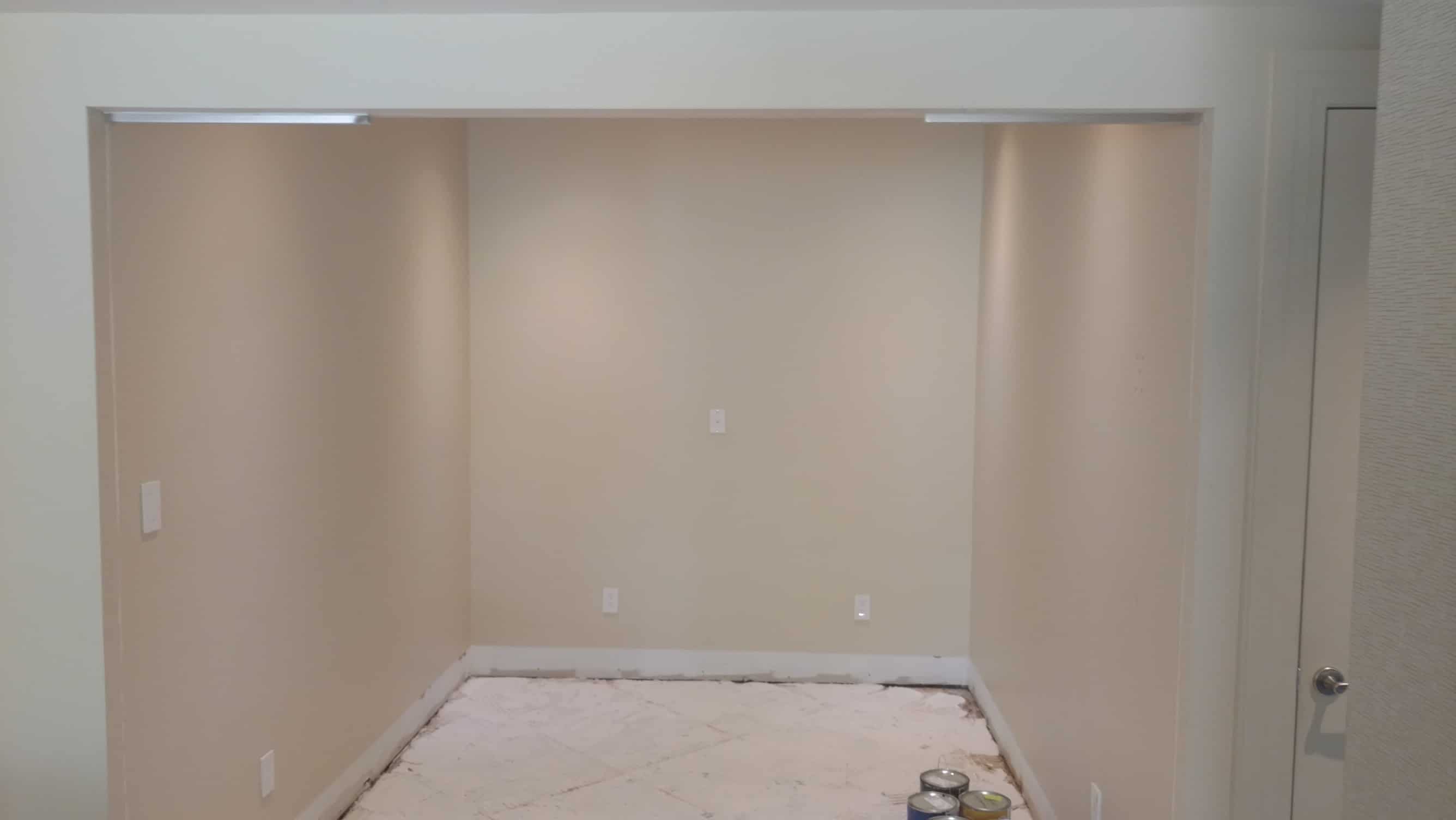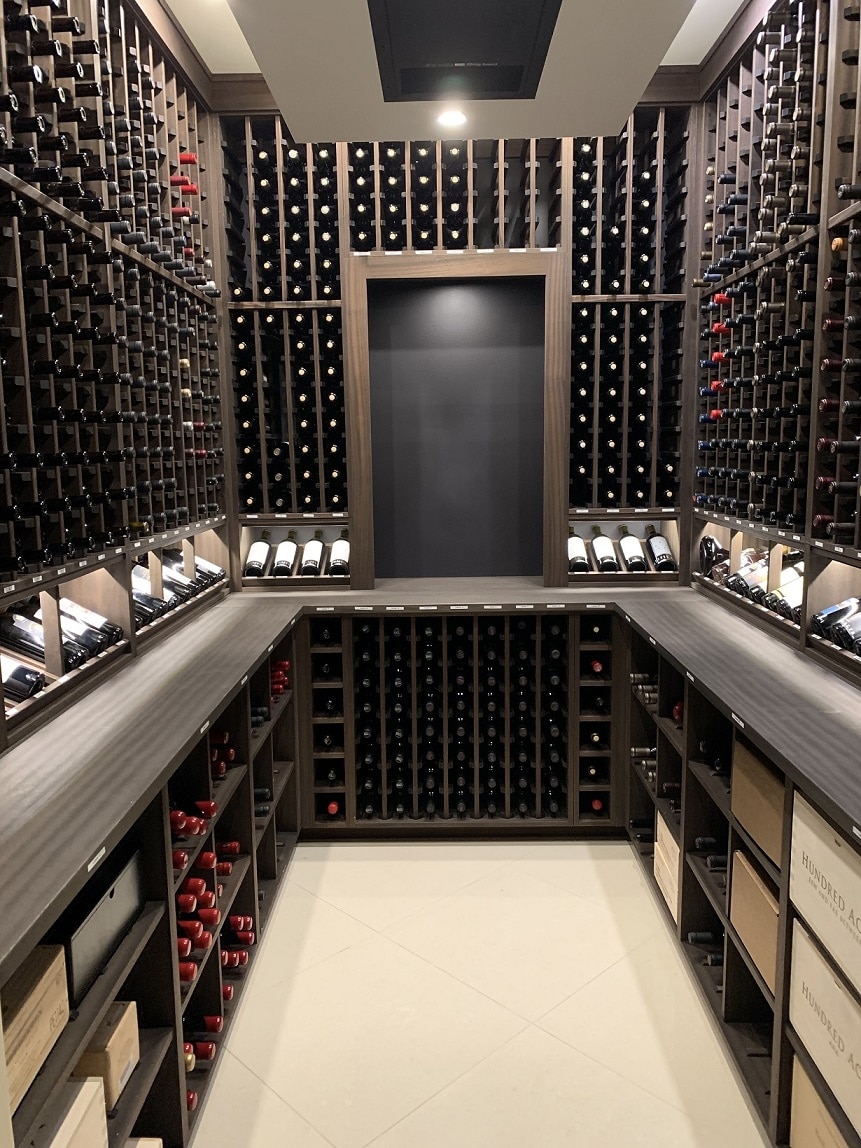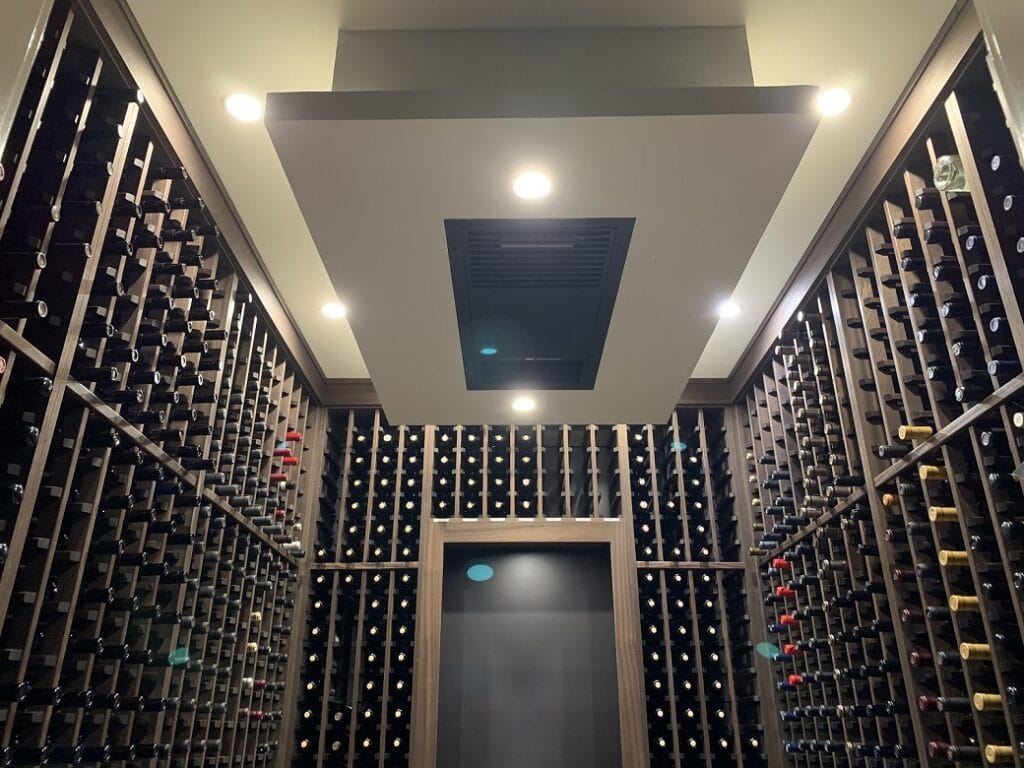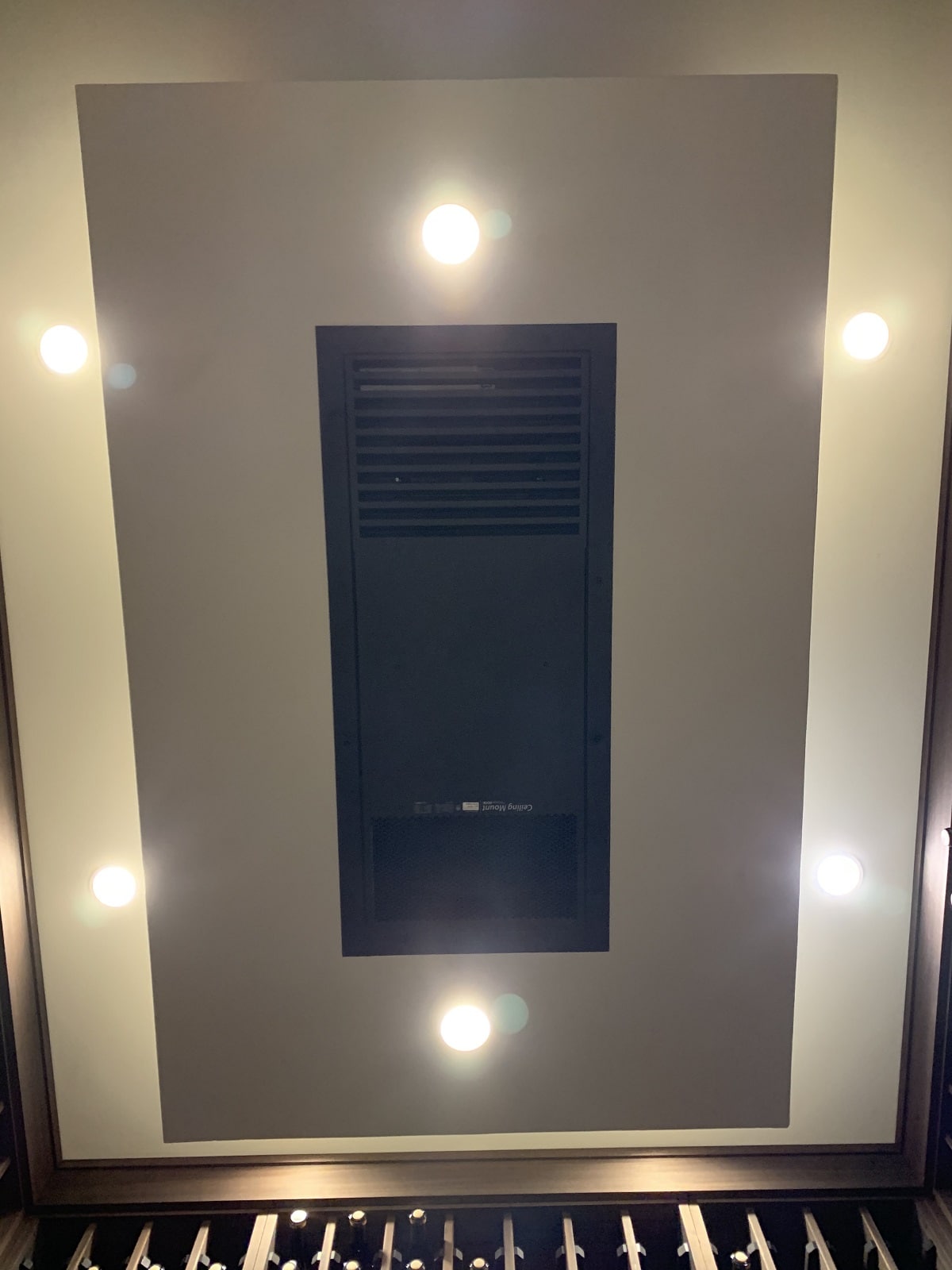Heat Load Calculation & Choosing the Perfect Cooling Unit for Transitional Maryland Home Wine Cellars

This article is an in-depth look at how the custom wine cellar design experts at Harvest approach heat load calculation and cooling unit selection. You can read more about the wine cellar design and build process here.
The heat load calculation for wine cellars must be done by an expert before building begins. But what does heat load calculation for wine cellars mean? And why is it so important? Continue reading to learn more.
Heat Load Calculation: in a Nutshell
People often think that the essential part of a wine cellar is choosing and installing the racking system. They oftentimes overlook the importance of maintaining optimum wine temperature and humidity in the wine room. This is where a wine cellar heat load calculation comes into play.
The team does heat calculation for a wine cellar by considering several factors. These factors are the dimension of the wine cellar, the building materials used, the location of the wine cellar in the home and the insulation value (R-value) of the wine cellar. Each of these factors have a corresponding number which will be encoded by the cooling unit expert to his heat load computations.
The bigger the wine cellar, the higher will the value be for the heat load calculation. Consequently, a bigger wine cellar means you need to install a bigger cooling unit to compensate for the high heat load of the cellar.

As for the building materials, structures with insulation capabilities would help lower the value. Spray foam application within the cavity of the wine cellar walls will help lower the heat load of the wine room significantly. So, it is almost necessary to have spray foam application in every wine cellar. It will not only help insulate the wine cellar from external temperature changes, it will also help prevent the formation of water droplets in the wall cavity. These water droplets will disturb the target optimum humidity levels in the wine cellar.
With regards to the location of the wine cellar, there are things that the cooling unit expert would normally ask you. Will sunlight enter into the wine cellar directly? Will it be frequently opened? Is there any heat releasing appliance or machine near the wine cellar? These queries by team will also add more data for heat load calculation.
The R-value is an overall rating for insulation capability of the entire wine cellar, taking into consideration every material used for the wine cellar. It will be computed by the cooling system expert on site. The result will later be consolidated with the wine cellar heat load calculation. A high R-value means a lower heat load for your wine cellar.
Heat load calculation is needed to determine the BTU/h (British Thermal Unit per hour) of your wine cellar. It will help ascertain what cooling system would work best with your wine cellar. Basically, your cooling system should have a higher BTU value than the BTU/h of your wine cellar.
But it doesn’t automatically mean that you should always go for the cooling system with the highest BTU value. The BTU rating of your cooling system should not deviate too much from the heat load calculation of your wine cellar. If your cooling system is too powerful, it will cool the wine cellar faster than it was designed. That may sound ideal at first, but it is not the most efficient long-term way to cool your cellar, which will shorten the longevity of your cooling system.
Which Cooling System Would be Best for your Wine Cellar?
With wine cellar heat load calculation already tackled, which type of cooling system would be perfect for your wine cellar? There are plenty of options for wine cellar cooling system. But let’s narrow it down to the two basic types of wine cellar cooling systems: the self-contained cooling system and the split type cooling system.
Both cooling systems have pros and cons. But, nonetheless, both of them could be useful depending on the specification of the wine room. There’s no such thing as a perfect or a universal cooling unit for all wine cellars. Continue reading to see for yourself what would work best for your dream custom wine cellar.

Types of Cooling Unit
Self-Contained Cooling Units, also called through-the-wall cooling unit, have all their parts stored in a single enclosure or container. It requires no ducting. You just have to mount it through the wall. This type of cooling system is ideal for small wine cellars. It can be difficult, though, if the wine cellar is centrally located in the home. You can build or connect it to a designated room for its heat exhaust.
Split Type Cooling Units, on the other hand, have their parts, namely the evaporator and condenser, separated from each other. This is convenient since you can place the condenser away from the wine cellar to minimize noise and heat dissipation inside the wine cellar. You can either have a ducted or ductless system for this type of cooling unit.
Heat Load Calculation for a Client in Maryland
A couple in Maryland contacted Harvest Wine Cellars and Saunas to help build a wine cellar for their home. Originally, they told the team that they want a traditional wine cellar. But, after consulting with Tim, they decided to go with a more transitional design. This type of wine cellar has the elements of both a traditional wine cellar and a modern wine cellar. Wooden wine racking is typically an element in traditional designs. But, the clean straight lines and angles from the racking system, plus the minimalist cooling system, gives it a modern feel.

The first thing Tim and his team did was go to the client’s home. Then Tim jotted down all the information needed for the heat load calculation. Armed with the output of his computations, Tim discussed with the client what their best options for cooling system are. At the end of their discussion, Tim and the couple agreed to install a ceiling-mounted cooling unit. In this case, the right choice was a ducted, split-type cooling unit from Wine Guardian. It is a minimalist cooling system that adds contemporary design to the wine room. The only visible part of the cooling unit is the vent for pushing cool air in the wine room.
The installation of the cooling unit is a challenge for the team since the boiler room is just adjacent to the wine cellar. The team installed an R13 spray foam application in the wall cavities to block out the heat coming from the boiler room. If the team didn’t use any spray foam application, the heat load of the wine room would skyrocket.
Proper heat load calculation, combined with expertise and careful planning, are important elements in designing an efficient wine storage for your wine collection. It is advisable that you always work with companies and professionals that have years of experience and expertise in building functional wine cellars like Harvest Wine Cellars and Saunas.
Experts Always Do a Wine Cellar Heat Load Calculation for Every Project
Heat load calculation is a critical task that any professional wine cellar builder will do. It is helpful to both the client and the contractor. They can confidently discuss and make sound decisions on the overall design of the wine cellar. Heat load calculation takes out the guesswork in building an optimized wine cellar with an efficient cooling system. The client will have less chance of renovating or changing the design of the wine cellar due to inefficient cooling and ventilation. It will also eliminate the need to replace the cooling unit in a few years.
Call us NOW to make a quick heat load calculation for your dream cellar.



